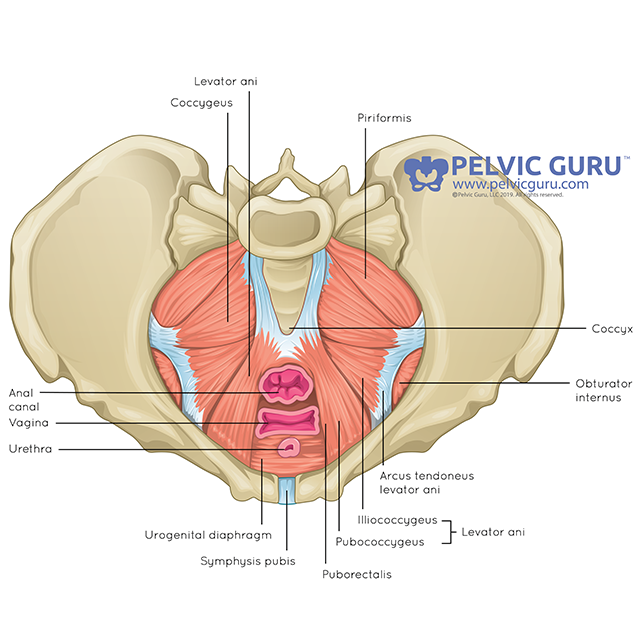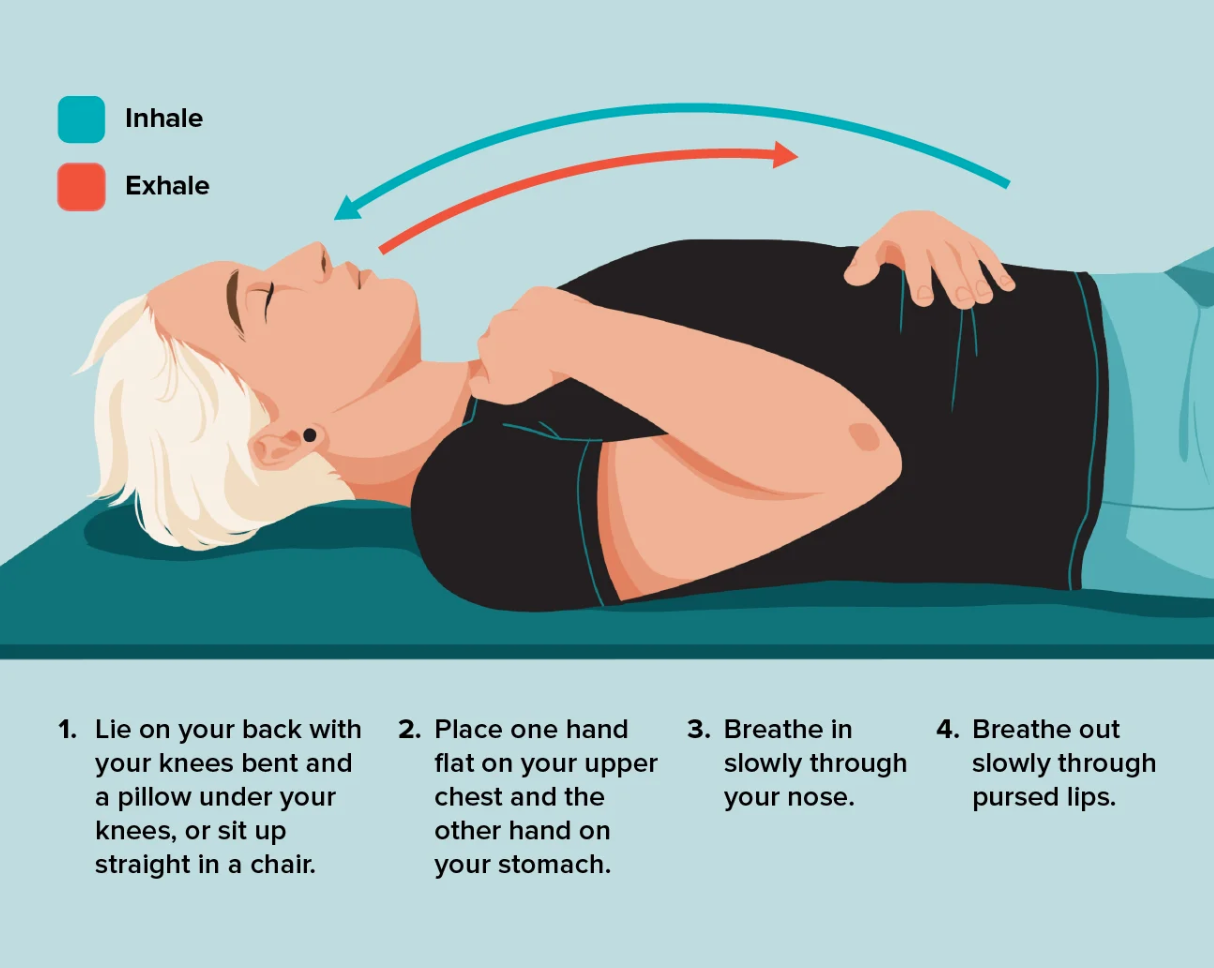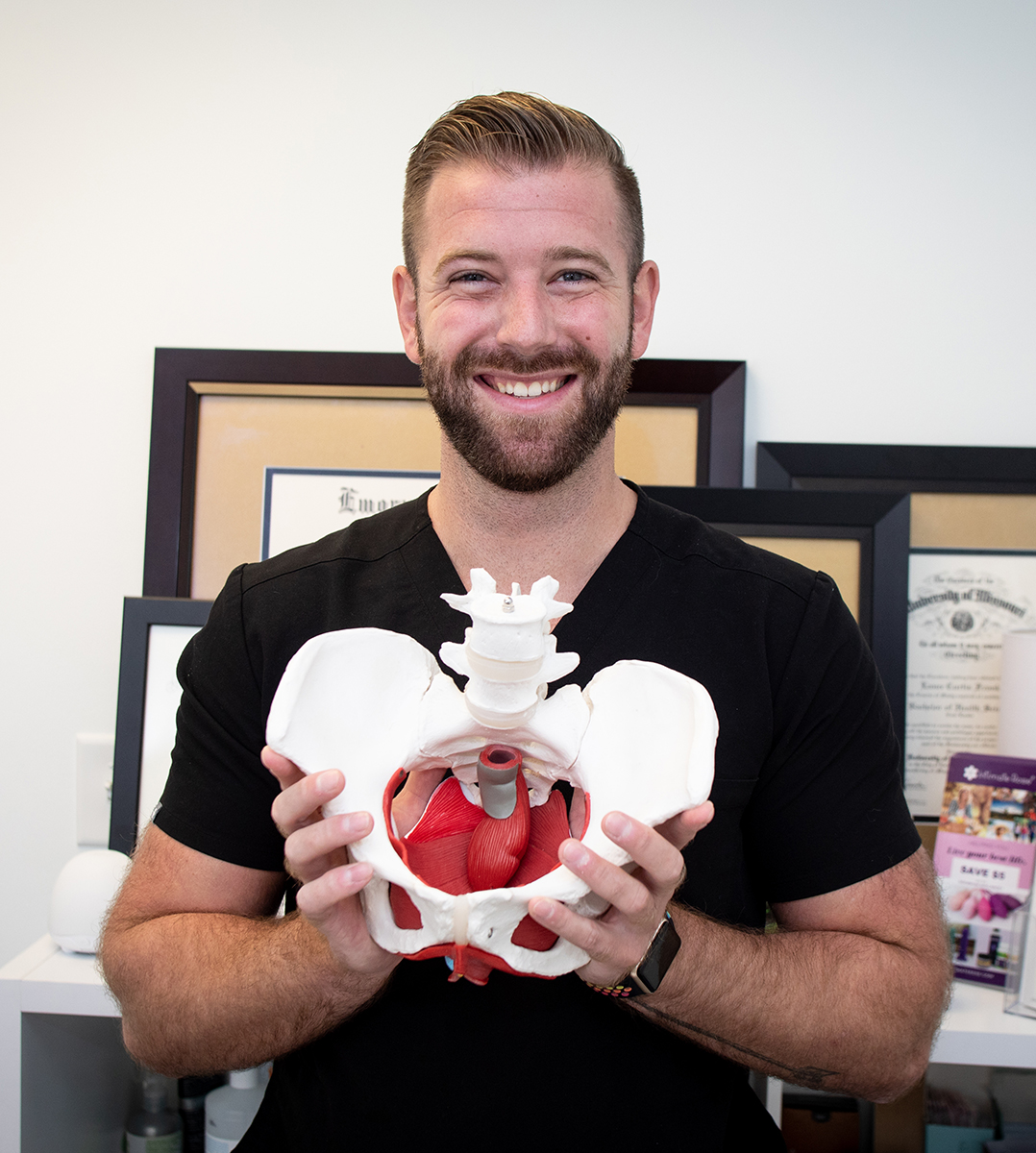Understanding the Pelvic Floor
If you’re reading this, you’re probably wondering what the foundation of pelvic floor health is, right? Before we get into that, let’s talk a little bit about what exactly we mean when we’re talking about the pelvic floor. The pelvic floor is a network of muscles (14 in those with female genitalia and 12 in those with male genitalia), ligaments, fascia, and other connective tissues. Most people associate the pelvic floor with helping us not leak or have accidents, but it’s involved in our sexual health, immune health, and supporting our abdominal organs as well. The pelvic floor muscles are unique in that, while being able to squeeze and tighten, there is no muscle that causes the pelvic floor to open or relax. So, if a muscle doesn’t help the pelvic floor relax, what does?

One of The Most Foundational Things for Your Pelvic Floor Health Is…
Your breath! Your breathing, and inhalation specifically, should be enough to open and relax the pelvic floor. But how does it work? It all comes from the diaphragm, which is a dome-shaped muscle located beneath the lungs, separating the thoracic and abdominal cavities. Diaphragmatic breathing, also known as belly breathing or abdominal breathing, is a technique that involves engaging the diaphragm fully during breathing. As you inhale and the diaphragm descends, the pelvic floor should drop or lengthen as it relaxes, and as you exhale, the diaphragm ascends, and your pelvic floor should rise again. This typically happens automatically, but with some pelvic floor dysfunction where there is too much tension or activity in the pelvic floor, it loses its ability to descend as it should with your inhale, potentially causing symptoms such as pelvic pain, tailbone pain, pain with penetration, etc.
Some Benefits of Diaphragmatic Breathing for Pelvic Floor Health Include:
- Reduces Intra-Abdominal Pressure:
One of the primary benefits of diaphragmatic breathing for pelvic floor health is its ability to reduce intra-abdominal pressure. When we breathe using our chest, it can create excess pressure in the abdomen, which is transferred to the pelvic floor muscles. Over time, this increased pressure can lead to pelvic floor dysfunction and associated issues.
By adopting diaphragmatic breathing, the diaphragm descends upon inhalation, gently massaging and stimulating the pelvic floor muscles. This action helps maintain optimal intra-abdominal pressure, reducing stress on the pelvic floor and promoting its overall health.
- Improves Core Stability:
The pelvic floor is an integral part of the body’s core musculature. Core stability is crucial for maintaining proper posture, balance, and overall physical function. Diaphragmatic breathing encourages the engagement of the deep core muscles, including the pelvic floor, transverse abdominis, and multifidus, leading to improved core stability.
- Enhances Blood Circulation:
Diaphragmatic breathing encourages deeper, more efficient breaths that improve blood circulation throughout the body. Enhanced blood flow to the pelvic area promotes tissue health and aids in the delivery of essential nutrients and oxygen to the pelvic floor muscles, keeping them strong and functional.
- Alleviates Stress and Tension:
Stress and tension can manifest in various ways, including increased muscle tightness and pelvic floor dysfunction. Diaphragmatic breathing is known to activate the body’s relaxation response, calming the nervous system and reducing overall stress levels. As a result, this can alleviate tension in the pelvic floor muscles and contribute to improved pelvic floor health.
So With All The Breathing Talk, How Do We Do It?
Sometimes, this breathing technique comes naturally for people while for others, it may take some practice and patience. Here is how you can try:
- Find a Quiet Space: Choose a quiet and comfortable space where you can lie down without distractions.
- Relax and Focus: Place one hand on your belly and one hand on your chest. Close your eyes and focus.
- Breathe Deeply: As you inhale, allow your diaphragm to expand, imagining the hand on your belly rise. Exhale slowly, allowing your belly to fall. Try to limit how much the hand on your chest is moving.
- Practice Regularly: Aim to practice diaphragmatic breathing for a few minutes each day, gradually increasing the difficulty by trying positions like sitting or standing, or during activity such as walking.
- Warning: Even though you’re trying to make the hand on your belly rise, its important NOT to push! You shouldn’t feel like you’re trying to push the hand out like you’re having a bowel movement; it should happen with a slow and calm breath.

Need Help?
This breathing technique can be confusing for some people to master. Not only that, but this is just a small part (albeit an important one) of a large puzzle when it comes to treating and curing pelvic floor symptoms. If you or someone you know struggles with pelvic pain, tailbone pain, sexual dysfunction, leaking, urgency, etc., contact us so we can help evaluate the patient and provide an individualized and tailored plan to help the patient recover.

